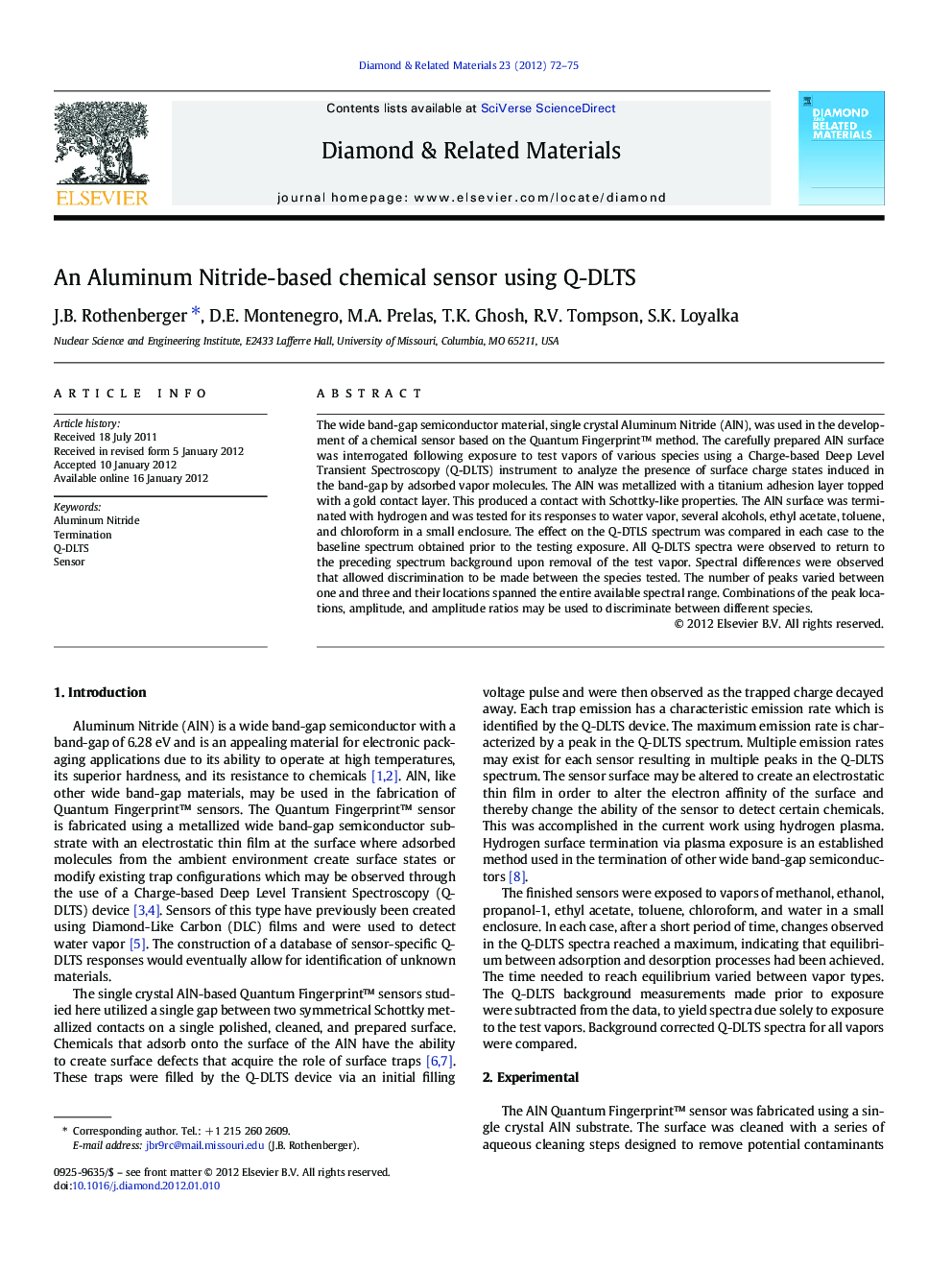| Article ID | Journal | Published Year | Pages | File Type |
|---|---|---|---|---|
| 702623 | Diamond and Related Materials | 2012 | 4 Pages |
The wide band-gap semiconductor material, single crystal Aluminum Nitride (AlN), was used in the development of a chemical sensor based on the Quantum Fingerprint™ method. The carefully prepared AlN surface was interrogated following exposure to test vapors of various species using a Charge-based Deep Level Transient Spectroscopy (Q-DLTS) instrument to analyze the presence of surface charge states induced in the band-gap by adsorbed vapor molecules. The AlN was metallized with a titanium adhesion layer topped with a gold contact layer. This produced a contact with Schottky-like properties. The AlN surface was terminated with hydrogen and was tested for its responses to water vapor, several alcohols, ethyl acetate, toluene, and chloroform in a small enclosure. The effect on the Q-DTLS spectrum was compared in each case to the baseline spectrum obtained prior to the testing exposure. All Q-DLTS spectra were observed to return to the preceding spectrum background upon removal of the test vapor. Spectral differences were observed that allowed discrimination to be made between the species tested. The number of peaks varied between one and three and their locations spanned the entire available spectral range. Combinations of the peak locations, amplitude, and amplitude ratios may be used to discriminate between different species.
► The AlN surface was exposed to vapors and Q-DLTS measurements were made. ► Observed Q-DLTS spectra changed with vapor exposure and over time. ► After vapor exposure, spectra were observed to return to pre-exposure levels. ► Q-DLTS outputs for each vapor were compared to observe differences.
